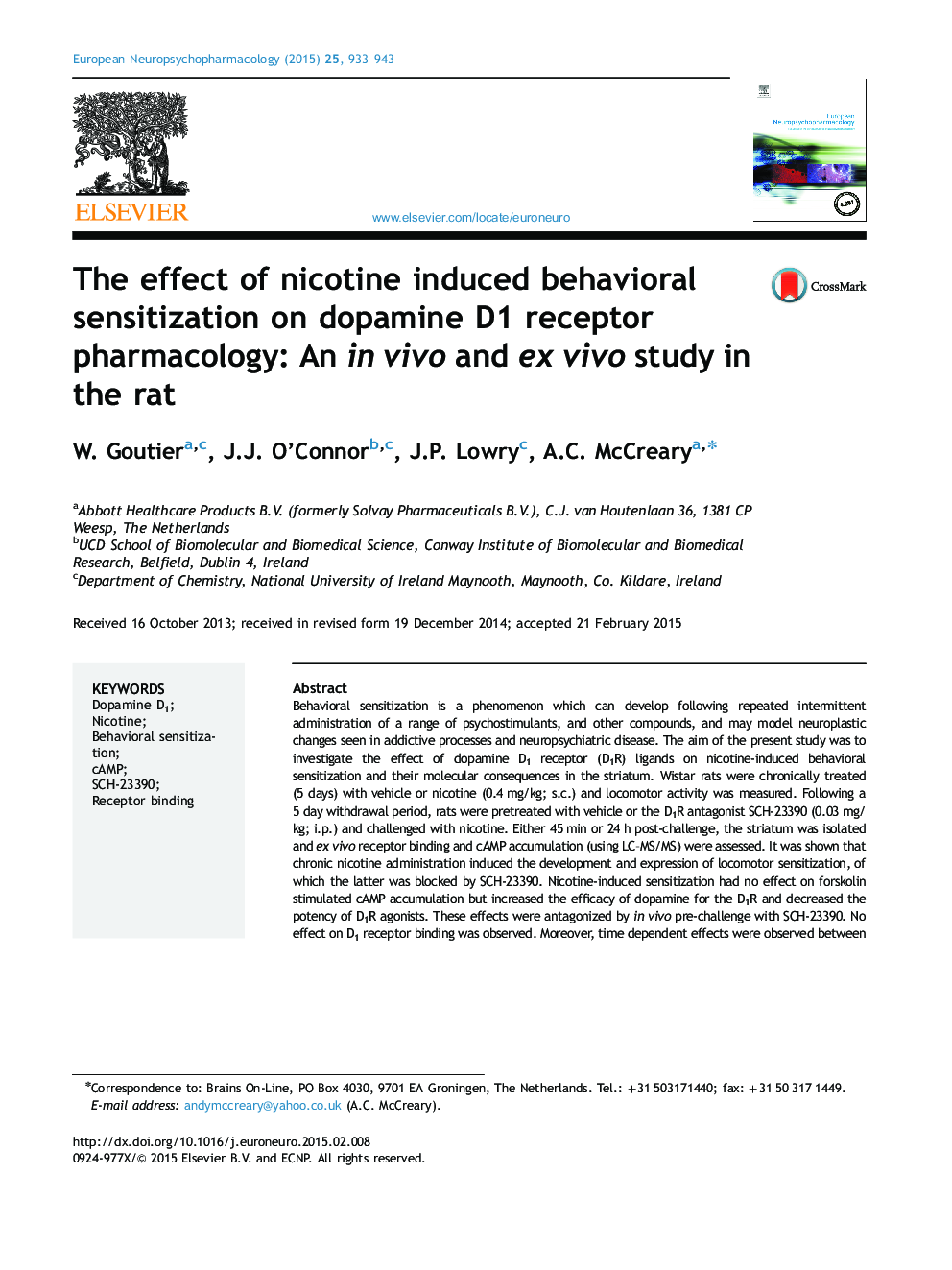| Article ID | Journal | Published Year | Pages | File Type |
|---|---|---|---|---|
| 320124 | European Neuropsychopharmacology | 2015 | 11 Pages |
Behavioral sensitization is a phenomenon which can develop following repeated intermittent administration of a range of psychostimulants, and other compounds, and may model neuroplastic changes seen in addictive processes and neuropsychiatric disease. The aim of the present study was to investigate the effect of dopamine D1 receptor (D1R) ligands on nicotine-induced behavioral sensitization and their molecular consequences in the striatum. Wistar rats were chronically treated (5 days) with vehicle or nicotine (0.4 mg/kg; s.c.) and locomotor activity was measured. Following a 5 day withdrawal period, rats were pretreated with vehicle or the D1R antagonist SCH-23390 (0.03 mg/kg; i.p.) and challenged with nicotine. Either 45 min or 24 h post-challenge, the striatum was isolated and ex vivo receptor binding and cAMP accumulation (using LC–MS/MS) were assessed. It was shown that chronic nicotine administration induced the development and expression of locomotor sensitization, of which the latter was blocked by SCH-23390. Nicotine-induced sensitization had no effect on forskolin stimulated cAMP accumulation but increased the efficacy of dopamine for the D1R and decreased the potency of D1R agonists. These effects were antagonized by in vivo pre-challenge with SCH-23390. No effect on D1 receptor binding was observed. Moreover, time dependent effects were observed between tissue taken 45 min and 24 h post-challenge. The present findings provide a connection between behavioral sensitization and intracellular cAMP accumulation through the D1R. Together these data suggest that changes in D1R signaling in the dorsal striatum may play an important role in the underlying mechanisms of nicotine-induced behavioral sensitization.
